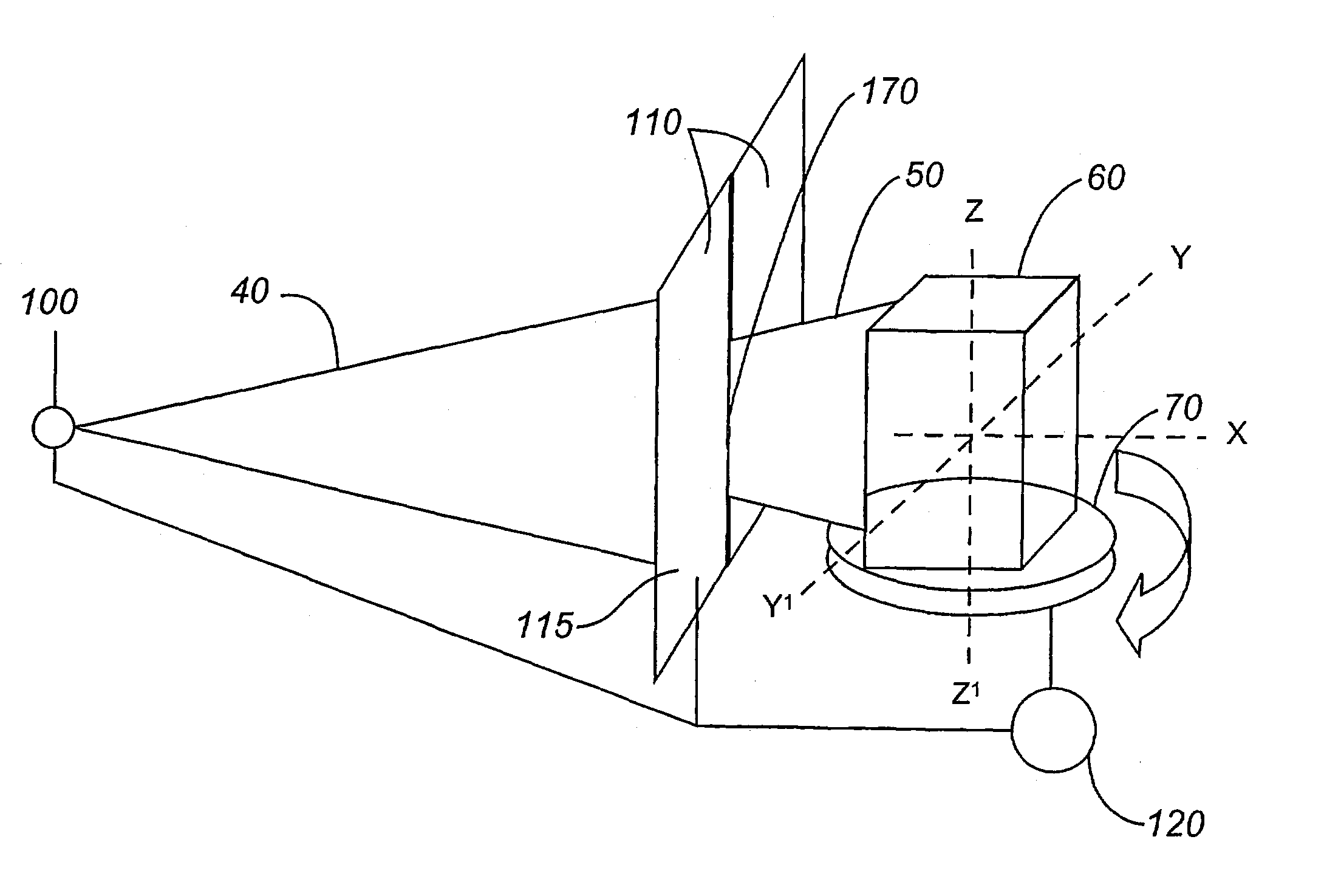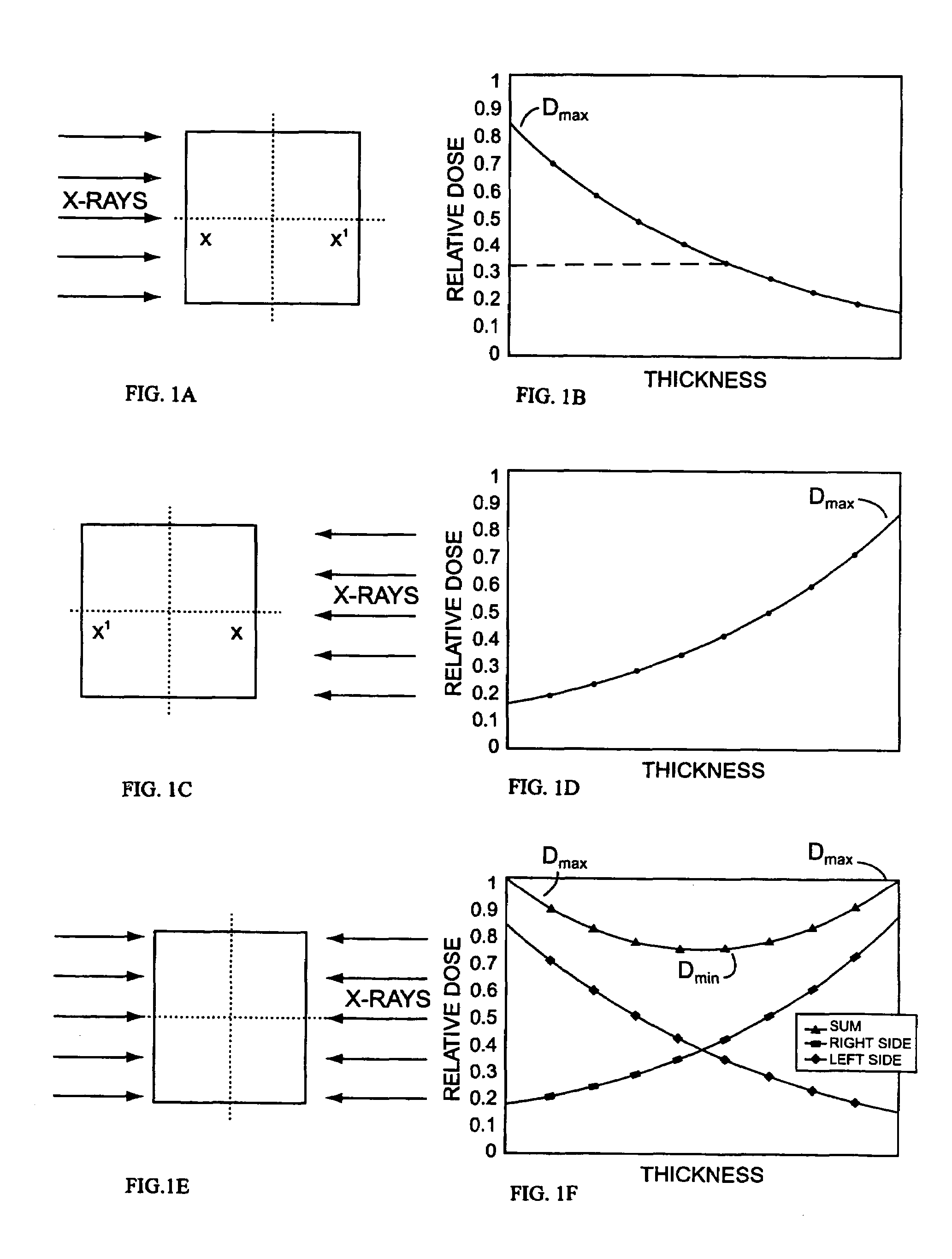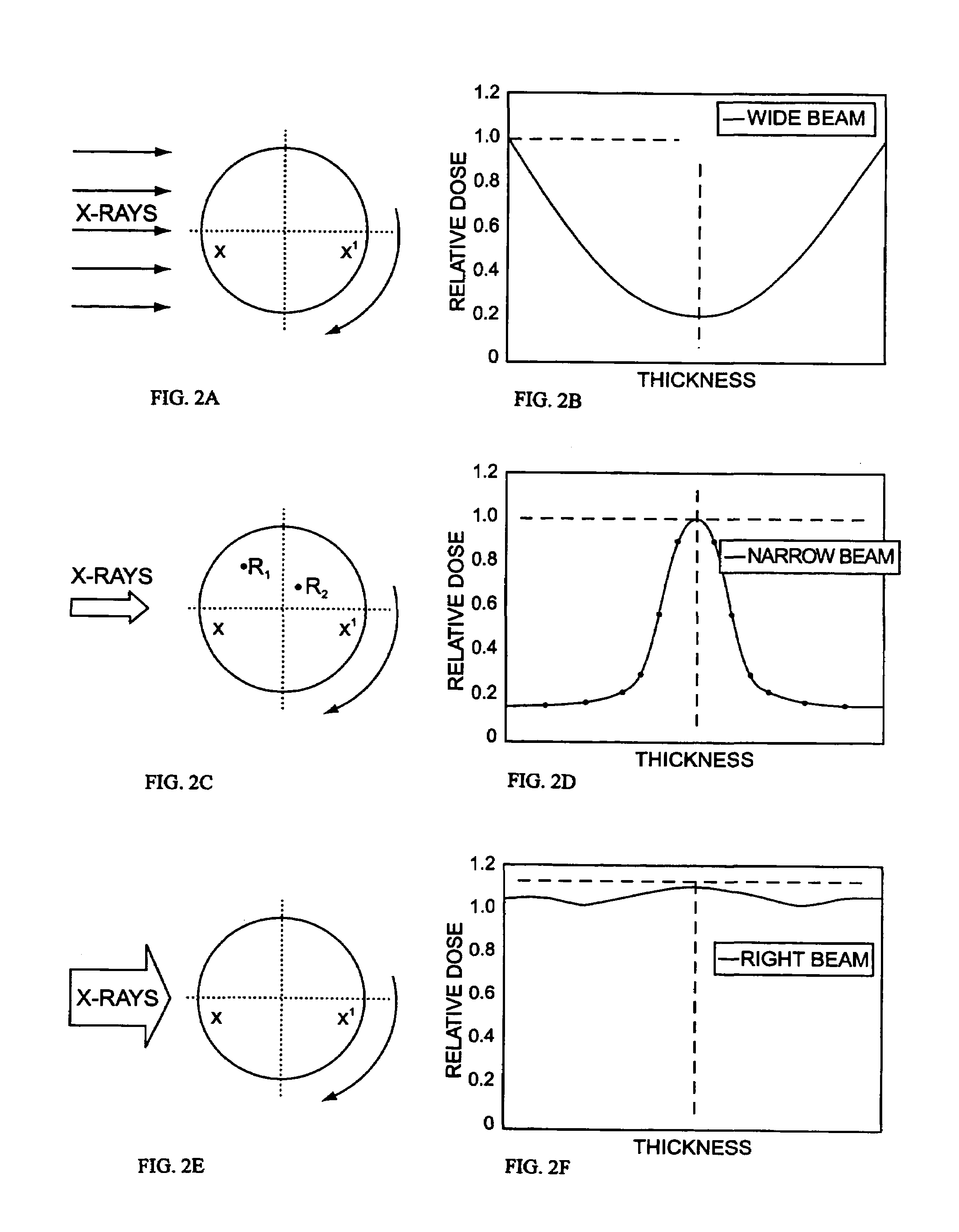Product irradiator for optimizing dose uniformity in products
a product irradiator and product technology, applied in the direction of irradiation devices, instruments, material analysis through optical means, etc., can solve the problems of not meeting the required dose, prone to overexposure to radiation, and sensitive to product variations in radiation processing
- Summary
- Abstract
- Description
- Claims
- Application Information
AI Technical Summary
Benefits of technology
Problems solved by technology
Method used
Image
Examples
example 1
Radiation Profiles in a Product with Densities of about 0.2 or about 0.8 g / cm3
[0124]An accelerator capable of producing an electron beam of 200 kW and 5 MeV is used to, generate X-rays from a tungsten, water cooled converter. The bremsstrahlung energy spectrum of the X-ray beam produced in this manner extends from 0 to about 5 MeV, with a mean energy of about 0.715 MeV. A cylindrical product of 120 cm diameter, comprising a product with an average density of either 0.2 or 0.8 g / cm3 is placed onto a turntable that rotates at least once during the duration of exposure to the radiation beam. The distance from the source plane (converter) to the center of the product is 112 cm. The collimator is set to produce a beam width of 10, 50 or 120 cm. The rectangular cross section of height of the beam is set to the height of the product. Typically to deliver a dose of about 1.5 kGy to a product characterised in having a density of 0.2 g / cm3, the product is exposed to radiation for about 2 to ...
example 2
Irradiation of Circular and Rectangular Products: 1 mm Convertor
[0128]Bremsstrahlung X-rays are produced as described above using a 5 MeV electron beam with a circular cross section (10 mm diameter) that scanned vertically across the converter. A 1 mm Ta converter backed with an aluminum (0.5 cm) water (1 cm) aluminum (0.5 cm) cooling channel is used to generate the X-rays. A product of 0.8 g. / cm3, with two footprints are tested: one involved a cylindrical product with a 60 cm or 80 cm radius footprint, the other is a rectangular product with a footprint of 100×120 cm, and 180 cm height, both product geometries are rotated at least once during the exposure time. The distance from the converter to the collimator is 32 cm.
[0129]In order to optimize DUR, several collimator apertures are tested for a cylindrical product (Table 3). Examples of several determinations of the dose along a slice of the product, for a 60 cm radius cylindrical product are presented in FIG. 11.
[0130]
TABLE 3DUR ...
example 3
Irradiation of Circular and Rectangular Products: 2.35 mm Convertor
[0135]The Dmax:Dmin ratio may still be further optimized by increasing the overall penetration of the beam within the product. This may be achieved by increasing the thickness of the convertor to produce a X-ray beam with increased average photon energy. In order to balance yield of X-rays and beam energy, a Ta convertor of 2.35 mm (including a cooling channel; 0.5 cm A1, 1 cm H2O, 0.5 cm A1) was selected. This thicker convertor generates fewer photons per beam electron (0.329 phton / beam electron), compared with the 1 mm convertor (0.495 photon / beam electron) due to the increased thickness and attenuation of the X-ray beam. However, even though the number of X-rays produced is lower with a 2.35 mm convertor, the beam that exits the convertor is of a higher average photon energy. As a result of the change in irradiation beam properties, the effect of aperture width and beam power were examined within cylindrical and r...
PUM
 Login to View More
Login to View More Abstract
Description
Claims
Application Information
 Login to View More
Login to View More - R&D
- Intellectual Property
- Life Sciences
- Materials
- Tech Scout
- Unparalleled Data Quality
- Higher Quality Content
- 60% Fewer Hallucinations
Browse by: Latest US Patents, China's latest patents, Technical Efficacy Thesaurus, Application Domain, Technology Topic, Popular Technical Reports.
© 2025 PatSnap. All rights reserved.Legal|Privacy policy|Modern Slavery Act Transparency Statement|Sitemap|About US| Contact US: help@patsnap.com



